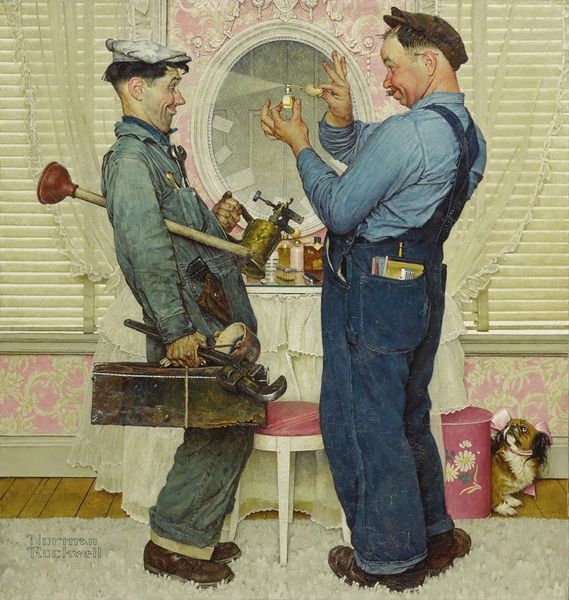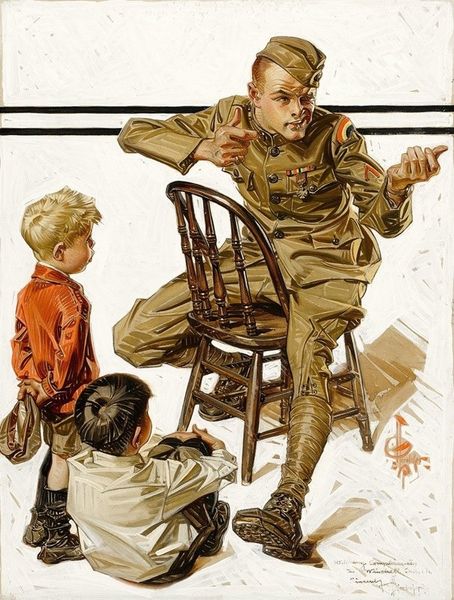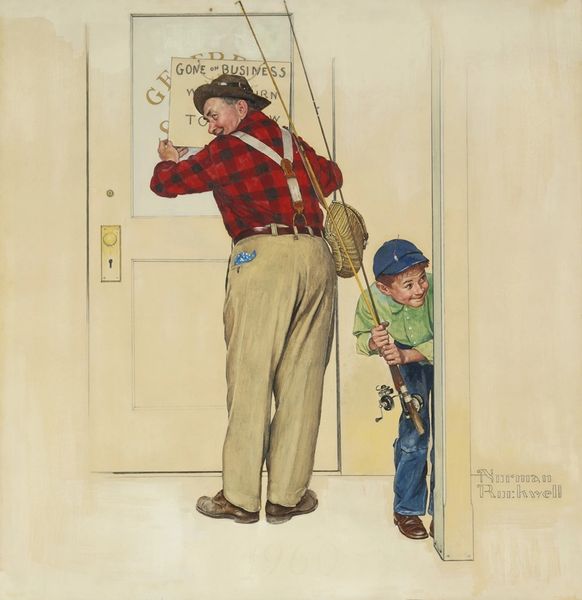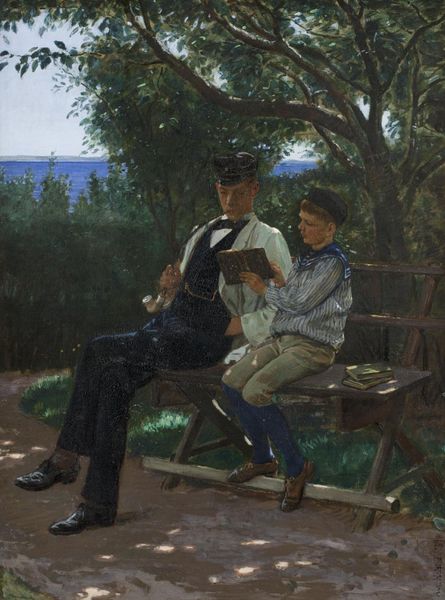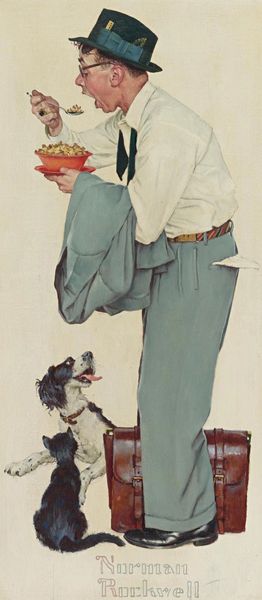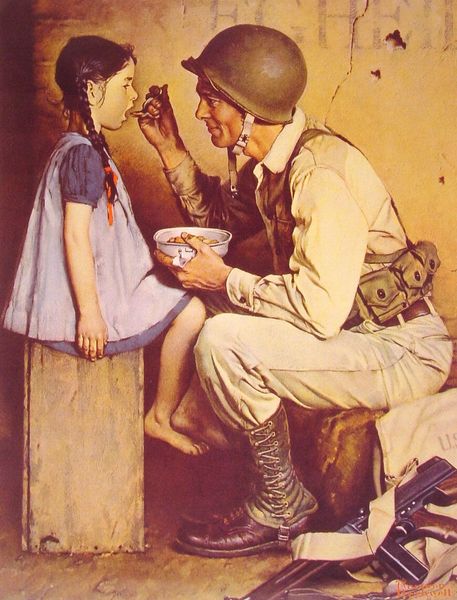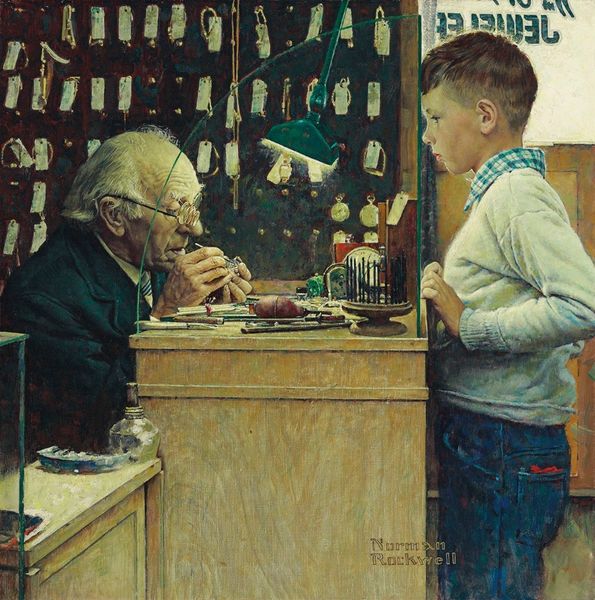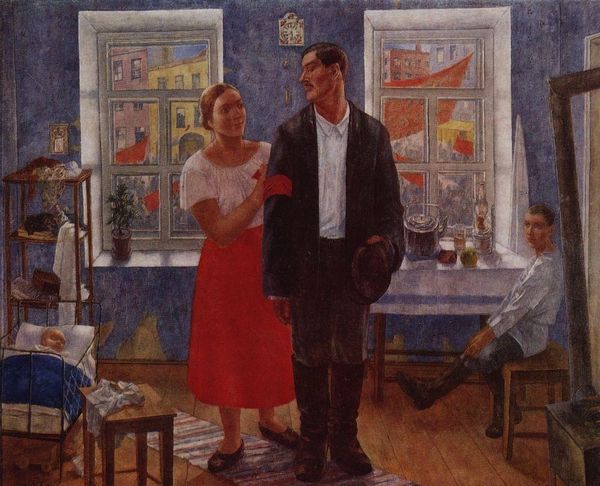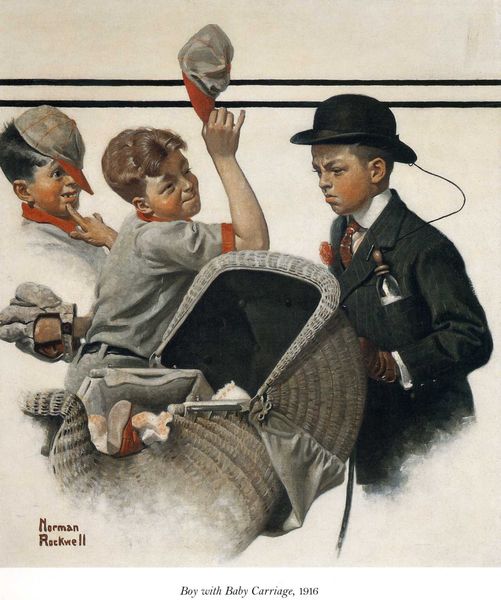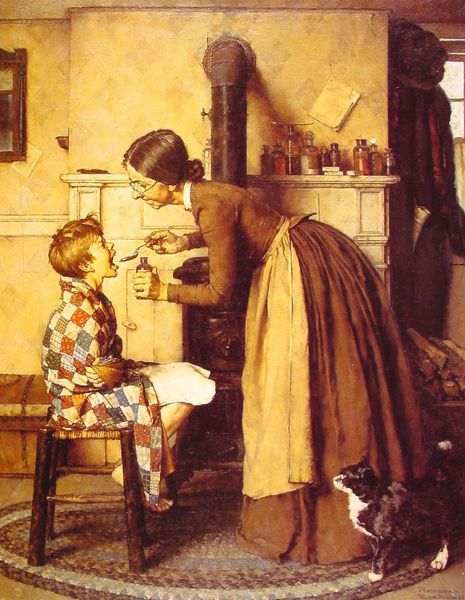
painting, oil-paint
#
narrative-art
#
painting
#
oil-paint
#
oil painting
#
genre-painting
#
portrait art
#
realism
Copyright: Norman Rockwell,Fair Use
Editor: This is Norman Rockwell's "The Runaway," painted in 1958 using oil. I'm immediately struck by the contrast between the stern-looking policeman and the small boy, sitting side-by-side at a lunch counter. What symbols jump out at you? Curator: For me, the counter *is* the symbol. It's an altar of sorts, a neutral meeting ground. Think of the counter as a space where societal roles are momentarily suspended. Notice the carefully rendered details – the coffee pot, the daily specials board – these aren't just props. They're familiar icons of everyday American life. Editor: I see what you mean. It’s almost like the lunch counter stands for community. Does that red bundle on the floor tie into that at all? Curator: Precisely! The bundle, the runaway’s meager possessions, represents vulnerability but also possibility. It’s a cultural shorthand for the hobo, the wanderer, echoing back to a longer American narrative of freedom and escape, but set against the perceived safety of the officer’s uniform, representative of small town law and order. Ask yourself, where does individual freedom end and social responsibility begin? Editor: So, it’s a story about freedom and security then. I hadn’t thought of the officer representing something other than just authority. Curator: Rockwell excels at presenting such symbolic dualities in mundane settings, playing with these deep-seated cultural understandings. Look at how the officer's gaze is soft, fatherly almost, contradicting our first assumptions of sternness. It’s a conversation starter. Editor: That makes me rethink the entire scene! Now I'm seeing layers of storytelling I hadn’t noticed before. Thanks.
Comments
No comments
Be the first to comment and join the conversation on the ultimate creative platform.
